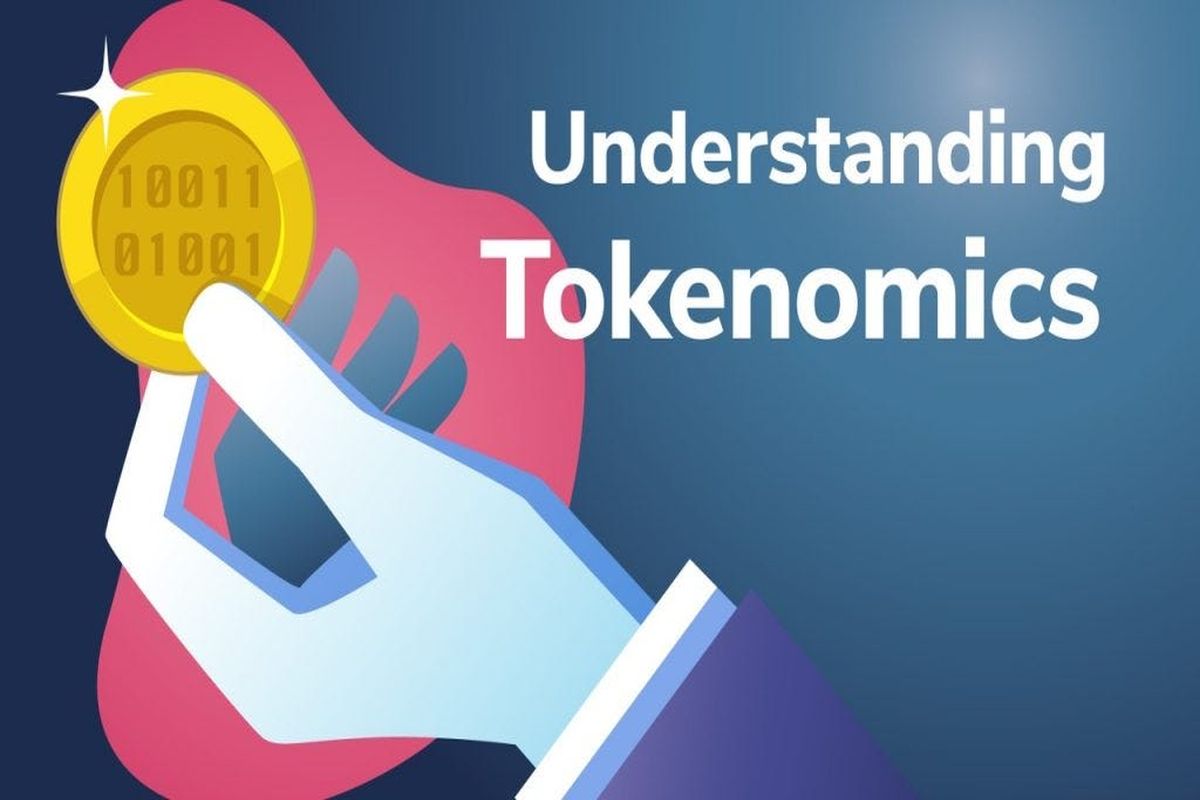Cryptocurrencies go beyond mere coin names; many possess self-sustaining micro-economies governed by different terms and regulations. Tokenomics encompasses many factors that collectively influence the trajectory of a project’s native cryptocurrency. Understanding these elements provides insight into a crypto’s sustainability, dynamics, and potential influence. This article delves into the intricacies of tokenomics, examining its components and how they shape a cryptocurrency’s supply and demand dynamics.
What Is Tokenomics?
Tokenomics combines two words: “token” and “economics.” It refers to how a cryptocurrency project manages the supply and demand of its tokens. This concept covers various aspects, including a crypto token’s creation, features, distribution, and overall economics.
What Is A Crypto Token?
Let’s break down what a crypto token is. It’s a digital unit of currency created by cryptocurrency projects on an existing blockchain. Like traditional currencies, these crypto tokens have a specific value and can be traded.
Now, when we talk about the economics of tokens, it’s essential to understand how it differs from traditional economics. In traditional economies, governments often create more money when faced with challenges like wars or droughts. This can lead to a decrease in the value of existing money over time.
In contrast, crypto projects follow predetermined and algorithmically created token issuance schedules. It means we can accurately predict the number of coins in circulation at any given time. The distribution of these coins among different stakeholders is also planned. While changing the issuance schedule and distribution plan is technically possible, implementing it is challenging.
Core Features Of Tokenomics
Now, let’s explore the essential features of a cryptocurrency that significantly impact how much people want it and how much of it is available.
Issuance
Issuance is the process of creating a new token. It is a new concept that did not exist before. Before you indulge yourself in studying tokenomics, here are some essential questions that need to be asked:
- How are tokens issued?
- Which consensus mechanism is followed by the token?
To illustrate this, let’s look at Bitcoin (BTC) and Ether (ETH) in this tokenomics analysis.
Bitcoin operates on a proof-of-work (PoW) consensus mechanism. Miners earn new BTC coins by adding new blocks to the blockchain, with the creation rate predetermined (discussed later is the concept of halving).
In contrast, the Ethereum blockchain uses a proof-of-stake (PoS) consensus mechanism. Validators lock up 32 ETH to validate transactions and create new blocks. The newly minted ETH is distributed to active validators based on their performance at each epoch, approximately every 6 minutes.
Similar issuance mechanisms are observed in other layer-one (L1) and layer-two (L2) tokens like Litecoin (LTC) and Cardano (ADA), aligning with BTC and ETH practices.
However, not all cryptocurrencies have intricate issuance methods. Some projects generate their entire token supply at Genesis and typically offer them through initial coin offerings (ICOs).
Related:DeFi Wallets and Initial DEX Offerings
Circulating Supply, Maximum Supply, And Market Capitalization
Tokenomics is all about understanding a cryptocurrency’s maximum supply and circulating supply. Think of it as the rules governing how many coins exist and how many are actively used.
Let’s take Bitcoin (BTC) as an example. BTC has a set limit of 21 million coins. It means there will always be 21 million Bitcoins in existence. This limited supply is one reason why BTC is considered valuable. People see it as a way to protect their money from losing value over time, especially inflation. Some even call BTC “crypto gold” because it has a limited supply, like gold.
On the other hand, Ethereum (ETH) doesn’t have a maximum supply. It can keep producing coins indefinitely. This difference in supply rules can affect how people view and use these cryptocurrencies.
When we talk about the circulating supply of a token, we mean the number of coins currently used or actively traded. To determine how valuable a cryptocurrency is in the market, you can multiply its price per unit by its circulating supply. This gives you market capitalization, like the total value of all the cryptocurrency coins in circulation.
Distribution
Many cryptocurrency projects share precise information about how they distribute their tokens. Typically, they give tokens to people who invested early or to venture capitalists to raise funds. They also reward the project’s founders and team members to motivate them.
The distribution of tokens might happen gradually over time, with specific periods where the tokens cannot be sold immediately. It helps ensure that the recipients are committed to the project. When these tokens are released into the market, it can affect the token’s price, especially if a holder decides to sell a large amount at once.
Burning
Burning in the world of cryptocurrencies means sending them to a wallet address that can’t be reaccessed, essentially taking them out of circulation.
When tokens are burned, it helps control inflation by reducing the total supply of the cryptocurrency that’s actively circulating. The specific way token burning works can vary from one cryptocurrency to another. Some projects burn a certain percentage of their total supply randomly or at scheduled intervals. For example, in specific blockchains like Ethereum, a part of every transaction fee users pay is automatically burned.
It’s important to note that not all cryptocurrencies have burning mechanisms; for instance, Bitcoin (BTC) doesn’t. However, some cryptocurrencies can undergo upgrades to introduce a burning mechanism. Ethereum, for example, implemented this with the ‘London upgrade’ in August 2019.
Related:Top 5 Strangest Crypto Narratives Of 2023
DeFi Incentives
DeFi, or Decentralized finance platforms, lets people earn rewards by putting their tokens in pools. Doing this can change how many tokens are available and make it less likely for people to sell them.
Utility
A token’s value depends on how useful it is. This usefulness affects how much people want it, influencing the token’s price, market value, and how much of it is in circulation (for instance, with ETH, where some get burned as gas fees).
Let’s take ETH as an example. People want ETH because they need it to pay transaction fees on Ethereum. If you don’t have ETH in your wallet, you can’t use DeFi platforms, buy NFTs, or play blockchain games on Ethereum. Tokens also have other uses, like making payments, participating in governance, staking crypto, using them as collateral, or getting involved in yield farming.
Sometimes, investors also buy tokens because they think the value will increase. It often happens when the market is doing well, and investors want to make money by trading cryptocurrencies.
Technical Analysis
Distinct technical features can set one cryptocurrency apart from others.
Every four years, Bitcoin experiences a process known as halving. During this event, the amount of new BTC produced with each block is reduced by half. This halving process is designed to decrease the inflation of BTC over time.
On the other hand, the staking of Ethereum (ETH) has led to a rise in inactive ETH tokens. As more ETH gets staked, fewer tokens become available in the market. This reduced supply in the market can positively affect the prices of ETH.
Related:Predictions That Could Shake Up the Cryptospace in 2024
Tokenomics Vs Token Mechanics
In cryptocurrency, two essential things make a token successful: token economics and token mechanics. Tokenomics is about making a limited number of tokens and encouraging people to keep them. It’s like planning how the tokens will work and be used.
On the other hand, token mechanics deal with the technical side of things. It means using smart contracts to control how the token behaves, using a blockchain to keep track of transactions, and having a system to ensure transactions are valid. It’s like setting up the rules and systems that make the token work properly.
Conclusion
Tokenomics is a crucial concept for anyone entering the crypto world. It refers to the key factors influencing a token’s value. Remember, there’s no magic formula; you must consider and analyze multiple factors together. Combining tokenomics with other tools for fundamental analysis helps you make well-informed decisions about a project’s potential and its token’s price in the future.











